Paris 1924: Beyond Chariots of Fire
The 1924 Paris Olympics stars in a major Fitzwilliam exhibition exploring the sport, art and bodies behind a pivotal Games. Exhibits speak of surprising partnerships, competing interests and unresolved tensions.
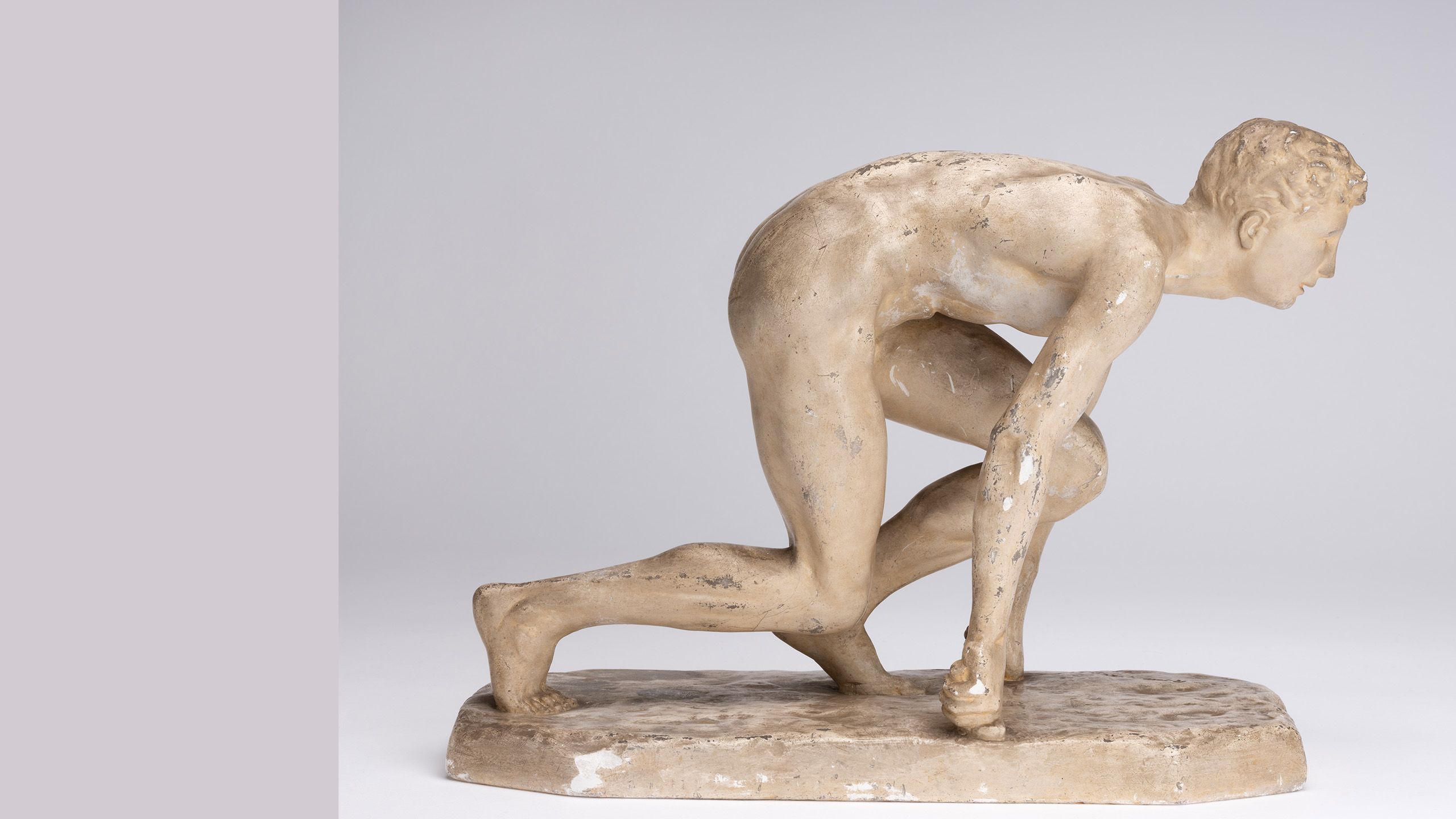
What does art have to do with sport? Some might ask.
A century ago, the Olympics provided a now surprising answer: both could win you an Olympic medal.
Visit The Fitzwilliam Museum’s Paris 1924 exhibition (19 July – 3 November 2024) and you will find Jack B Yeats' painting The Liffey Swim, and the Olympic silver medal it won, a shot put’s throw from the gold medal won by swimmer Lucy Morton in the women's 200-metre breaststroke.
If Olympic medals for painting, poetry and music don’t surprise visitors, the exhibition has much more that will. Its curators, Professors Caroline Vout and Chris Young, aim to show that art played a crucial role in the maturation of the modern Olympics in 1924. At the same time, they argue that these Games had a profound impact on art, design, mass media, celebrity and fashion, as well as social attitudes.
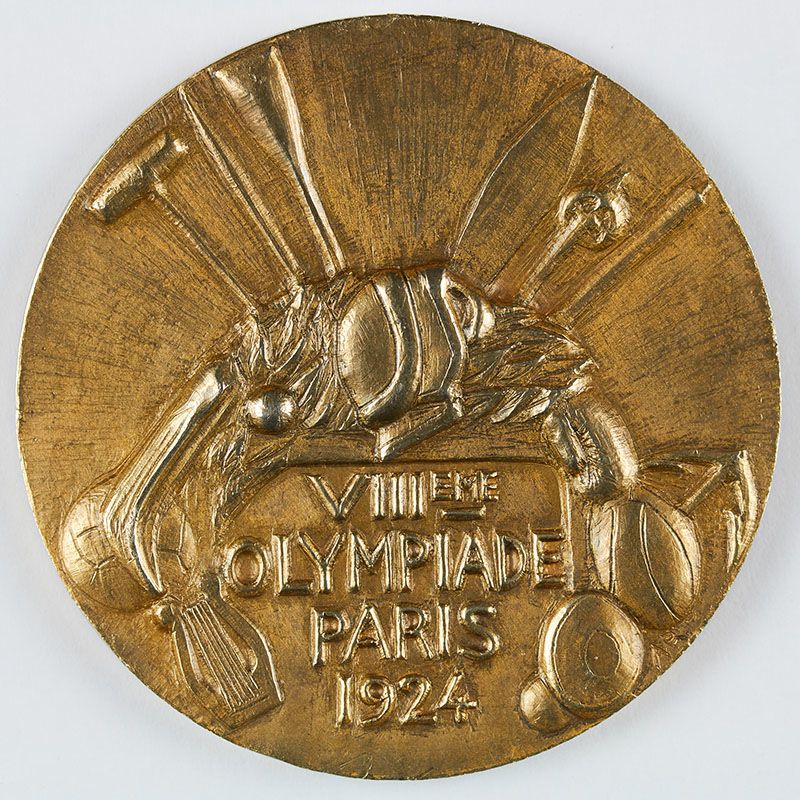
Lucy Morton's 1924 gold medal
Lucy Morton's 1924 gold medal
The 1924 Olympics were the last to be organised by Pierre de Coubertin, president of the International Olympic Committee, who had revived the Games in 1896. Remarkably, one of the competitors in 1896 was Charles Waldstein, a former Director of none other than The Fitzwilliam Museum.
It was here, in the 1880s, that the two men met and through their shared passion for classical history, education and sport, become friends. In 1894, Waldstein lobbied the Greek royal family on de Coubertin’s behalf to secure crucial support for a revival of the Games.
Vout says: “de Coubertin was really taken with ancient Greek culture. He wanted to reproduce the Greek model of sport which, he believed was all about the body beautiful’s claims to a beautiful soul.”
Young adds: “The physical culture of the gymnastics movement which emerged in the early nineteenth century seemed old-fashioned to de Coubertin in a way that the ancient Games didn't.”
(Left: de Coubertin; right: Waldstein)
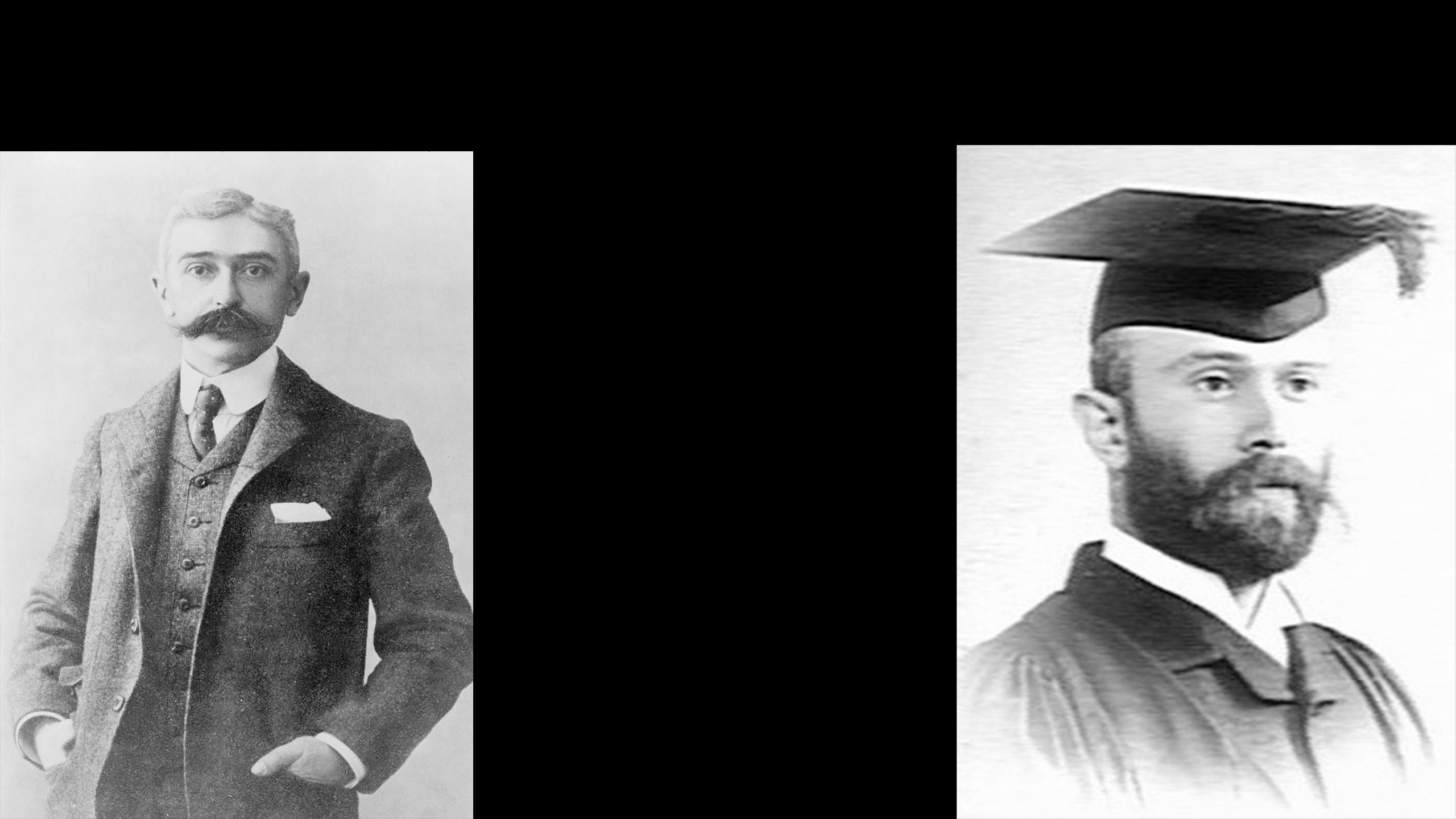
Cambridge and beyond
Beyond the Waldstein – Coubertin link, Cambridge has other reasons to lay claim to an exhibition about 1924. Students and alum won eleven Olympic medals for Great Britain in that Games. If the University had been a country, it would have come an astonishing ninth in the medal table. And then, of course, there is ‘Chariots of Fire’, the iconic film inspired by the story of the 100 metres champion, Harold Abrahams, formerly president of the University Athletics Club.
The exhibition will delight visitors with archival and photographic treasures relating to Abrahams, Douglas Lowe and other Cambridge legends. But this isn’t a show about Cambridge.
Chariots of Fire – visitors to the exhibition will see an image of the iconic beach scene and hear Vangelis – offers a narrow view of the 1924 Games, Vout points out. “It doesn’t show that Finland far outperformed Britain. It doesn’t feature the competition’s biggest stars like Paavo Nurmi and José Leandro Andrade. And it doesn’t feature any female athletes or acknowledge that out of 3,089 athletes, only 135 were women. Our exhibition offers a far broader view of Paris 1924.”
Vout is a Professor of Classics and Director of Cambridge’s Museum of Classical Archaeology. The exhibition’s co-curator, Professor Chris Young, is a German medievalist but has spent years researching twentieth-century sport. He’s currently writing a book about the 1936 Olympics. Vout and Young bring different perspectives to a complex moment in history, an event held between two world wars, simultaneously straining for classical ideals and cutting-edge modernity.
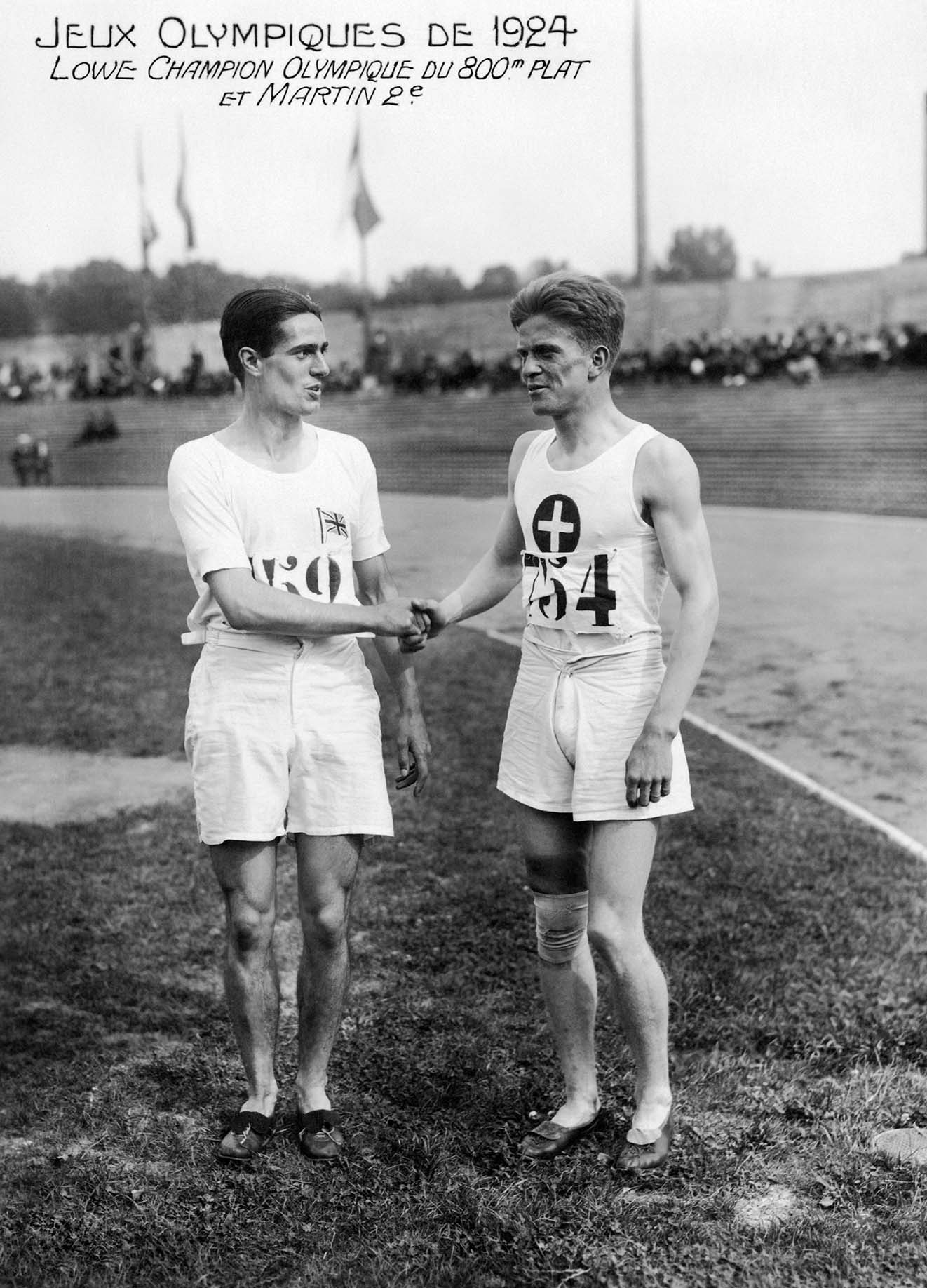
Douglas Lowe shakes hands with Paul Martin (SUI) after the 800m final
Douglas Lowe shakes hands with Paul Martin (SUI) after the 800m final
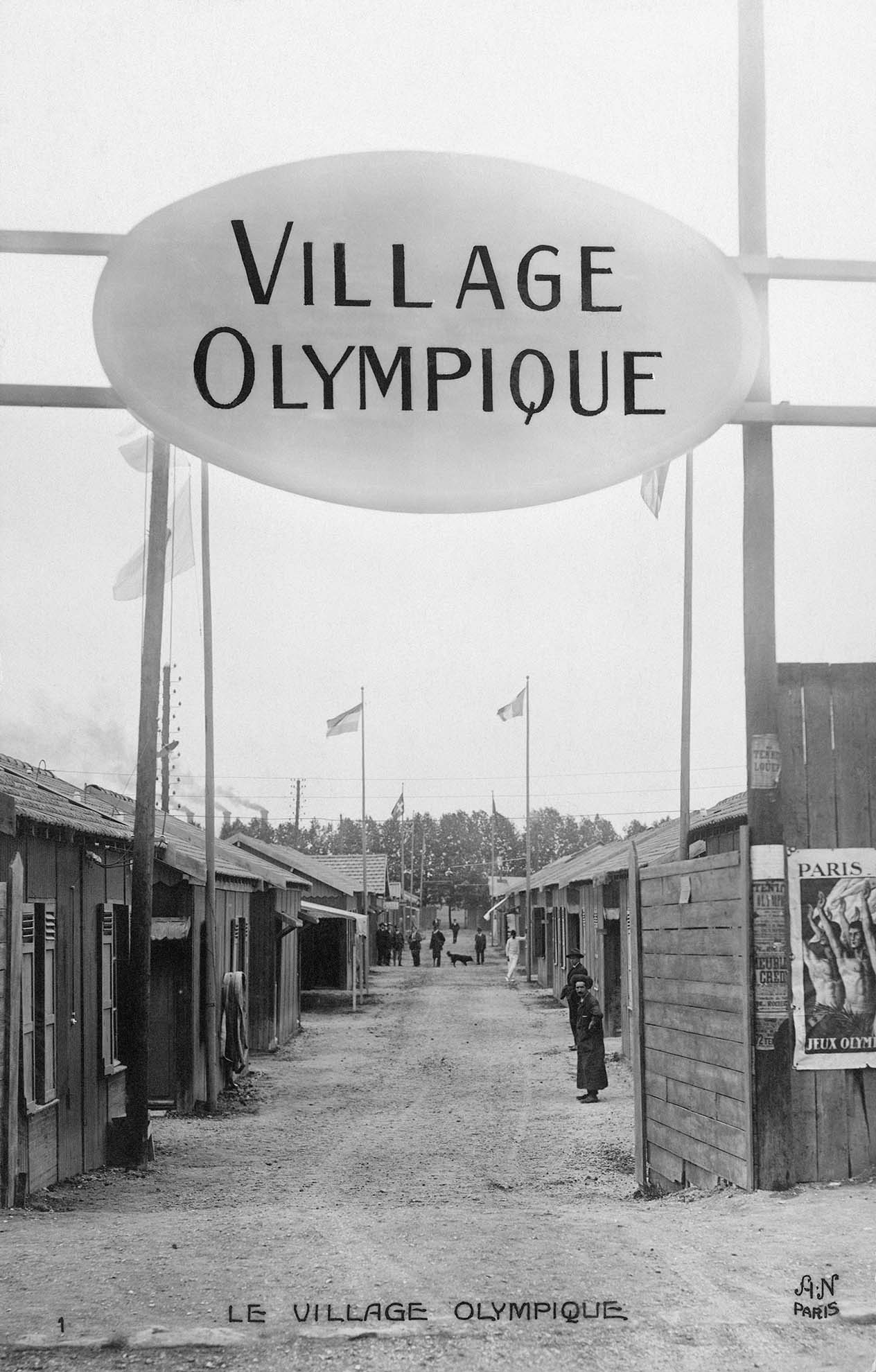
Entrance to the Olympic Village
Entrance to the Olympic Village
Need for speed
One year too late, in 1925, the German company Leica, unveiled a game-changing invention, a camera with a rapid shutter speed. Sports photography would never be the same again. The exhibition features numerous photos from the 1924 Games, but as Young points out, “they look a little flat and not very dynamic.” The more exciting way to capture sport visually in 1924 was, he says, with drawing, painting, prints and sculpture.
In one room, Umberto Boccioni’s dynamic Futurist sculpture Unique Forms of Continuity in Space can be seen alongside a 1920s bobsleigh and breakneck footage of the 1924 bobsleigh event.
Dr Rebecca Virag, the exhibition’s Research Assistant, is equally excited to be showing an energetic series of postcards by French lithographer, H.L. Roowy.
“Graphic artists really came into play in 1924,” Virag says. “Roowy created advertising material for aeroplanes and cars alongside Ernest and Marguerite Montaut. The Montauts are credited with introducing a visual language of speed to portray the new motorised machines of the 20th century. For the Olympics, Roowy adopted similar cartoonish lines of motion to depict javelin throwers, rugby players and other athletes.”
Young points to a bronze sculpture by the German artist Renée Sintenis. In The Athlete (1926), Paavo Nurmi appears to defy gravity as he hits full stride. The Flying Finn’s fists clench, his muscles strain and his hair blows back. It’s a masterpiece and Young can’t wait to see it.
“Nurmi was renowned for not giving any interviews. As well as the Flying Finn, he was known as the Phantom Finn because no one could work him out. Poets, artists and journalists were all trying. Sintenis managed to create an intimate moment here.”
Young is pleased to have plenty of German exhibits in the show, not least because the Germans didn't go to Paris in 1924 – they weren't invited. George Grosz’s The Gymnast and Willi Baumeister’s Female Runner II emphasise what a powerful force German artists were in reimagining the human form in art at this time.
“Olympic events owed a massive debt to ancient Greece,” says Vout. “In 1924, that debt came up really aggressively against new ways of representing the body, ways that broke the body down into pieces. This was partly perhaps a response to the First World War and the disabilities which it caused. Modernism and classicism come into dialogue in ways that radically reform what we understand a human body to be.”
Classical sculpture dictated what the publicity for the 1924 Games looked like and the exhibition opens with plaster casts from Cambridge’s Museum of Classical Archaeology. But these stereotypically beautiful, idealised bodies are juxtaposed with footage of the real bodies of 1924 competitors, spindly legs and all.
Of Baumeister’s painting, Vout says: “Classical sculptures gave a template to follow or kick against when trying to represent a male athlete. But there were no such templates for female athletes. Apart from being nude, this runner couldn't be further from the classical. She has this long Mannerist form and really small head.
“She bursts out of the frame towards you, taking the bend at speed. And in the background you've got a reclining guy in little yellow Speedos, propped up on his elbow like a reclining Venus, and he just stares at her as she sweeps past. It’s an amazing picture.”
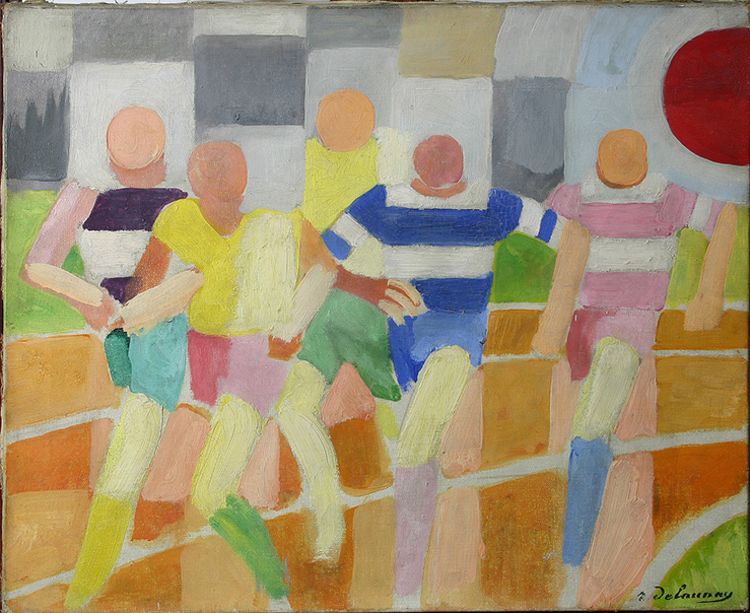
Robert Delaunay, The Runners, (about 1924)
Robert Delaunay, The Runners, (about 1924)
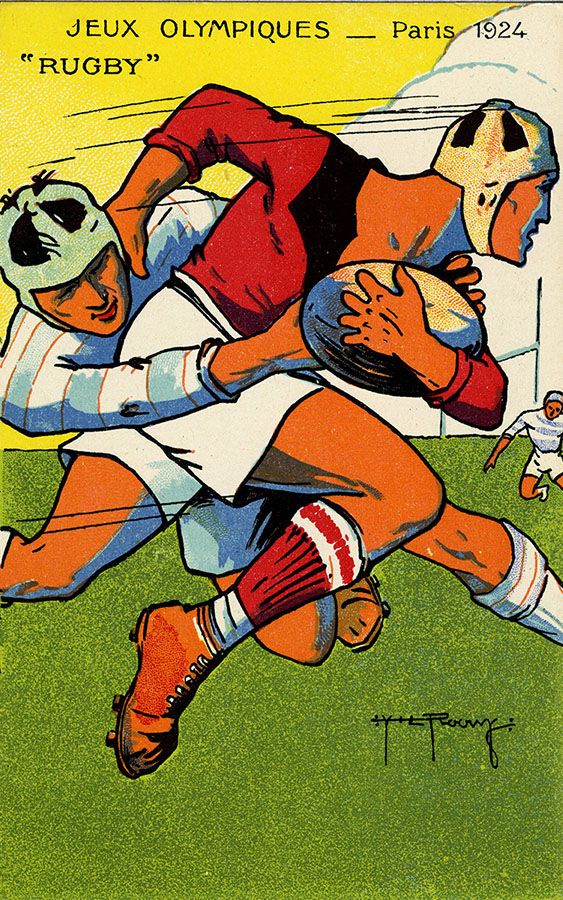
H.L. Roowy, rugby postcard for Paris 1924
H.L. Roowy, rugby postcard for Paris 1924
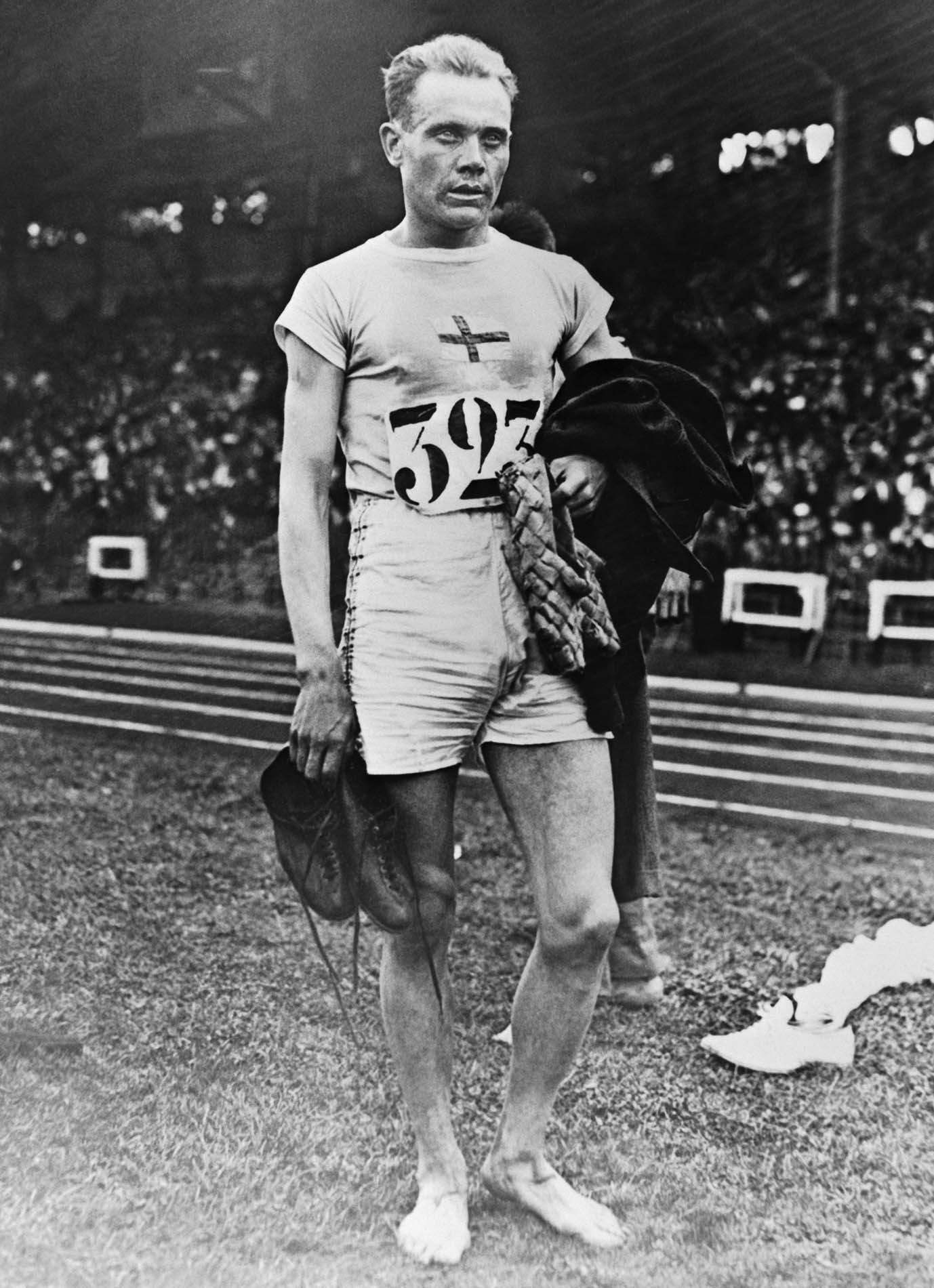
Paavo Nurmi at the 1924 Games
Paavo Nurmi at the 1924 Games
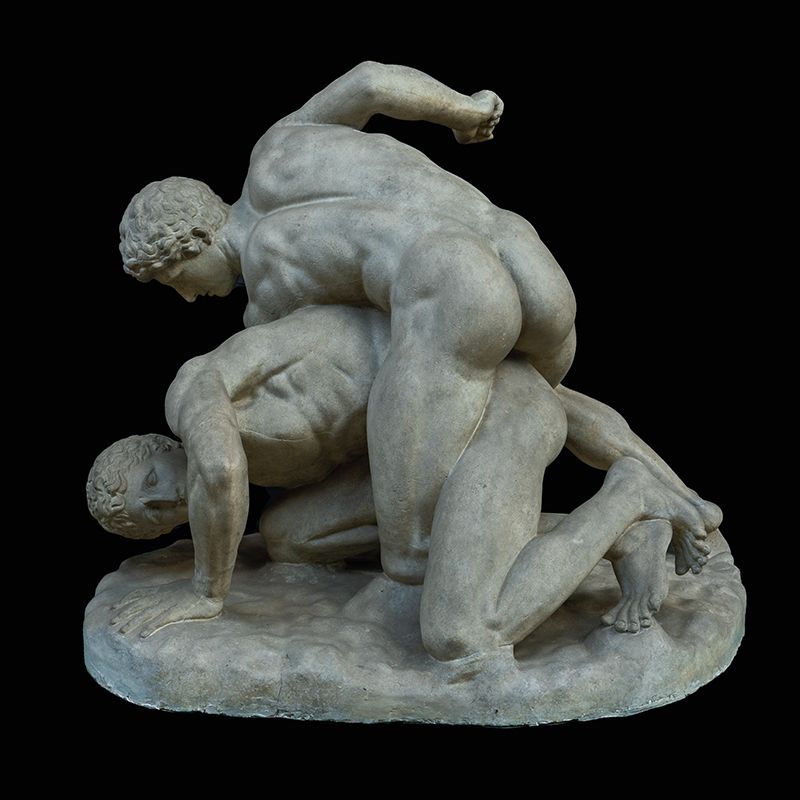
Plaster cast of the Roman sculpture The Wrestlers
Plaster cast of the Roman sculpture The Wrestlers
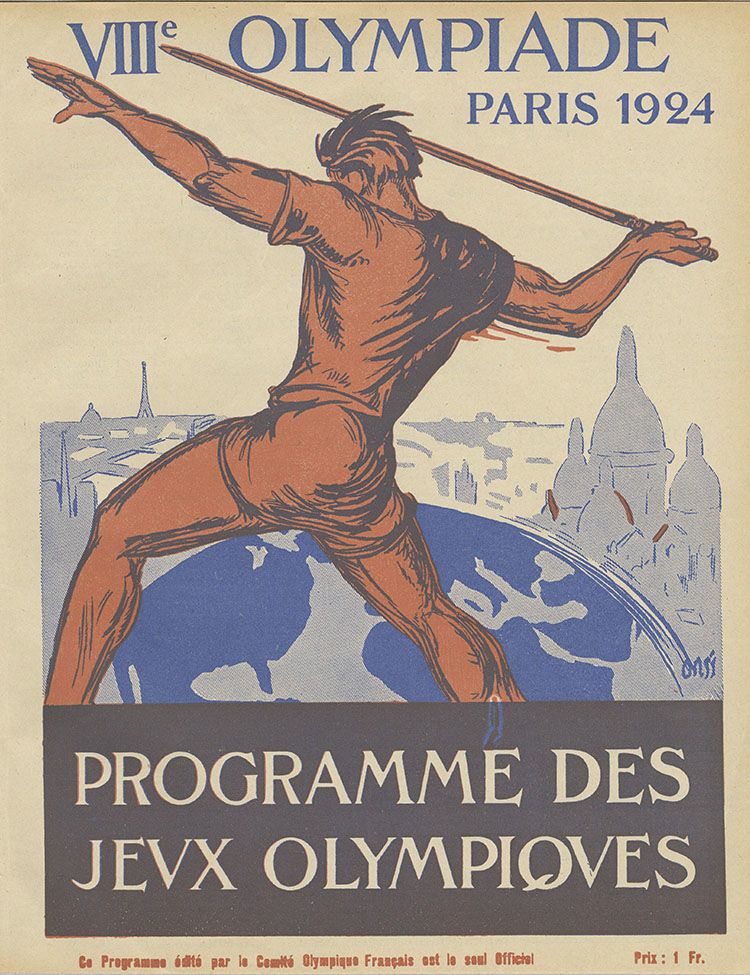
Programme for the 1924 Games
Programme for the 1924 Games
Women
Despite only representing four per cent of competitors in 1924, female athletes had a lasting impact on their sports, attitudes towards gender roles, art and fashion.
This was particularly evident on the tennis court. In the exhibition, a turn of the century painting by Charles March Gere provides a window onto a sedate Edwardian tennis party. The female players can be seen wearing ankle-length, long-sleeve dresses and hats perched atop tightly pinned buns. As they play, their feet barely leave the turf.

Charles March Gere, The Tennis Party (1900)
Charles March Gere, The Tennis Party (1900)
Joueurs de Tennis, painted in 1917 by André Lhote, couldn’t be more different. A bob haircut, muscular bare arms and legs, and rapid movement – expressed by the repeated forms of racket, ball and body – suggest a new species of female tennis player.
Close by, visitors will find the radically different kind of dress which had to be designed for this new sportswoman, including for France’s iconic champion, Suzanne Lenglen.
Vout says: “This silk dress is fascinating and extremely beautiful. It’s a little work of art, except it's covered in sweat stains which show the physical exertion of actually moving around in this thing to win matches.
“In this period, players ditched female decorum to show real physical strength. This is happening at the same time women are trying to get the vote. So these players were role models but at the same time, the display of flesh that you see in those action shots on court also sexualised them.”
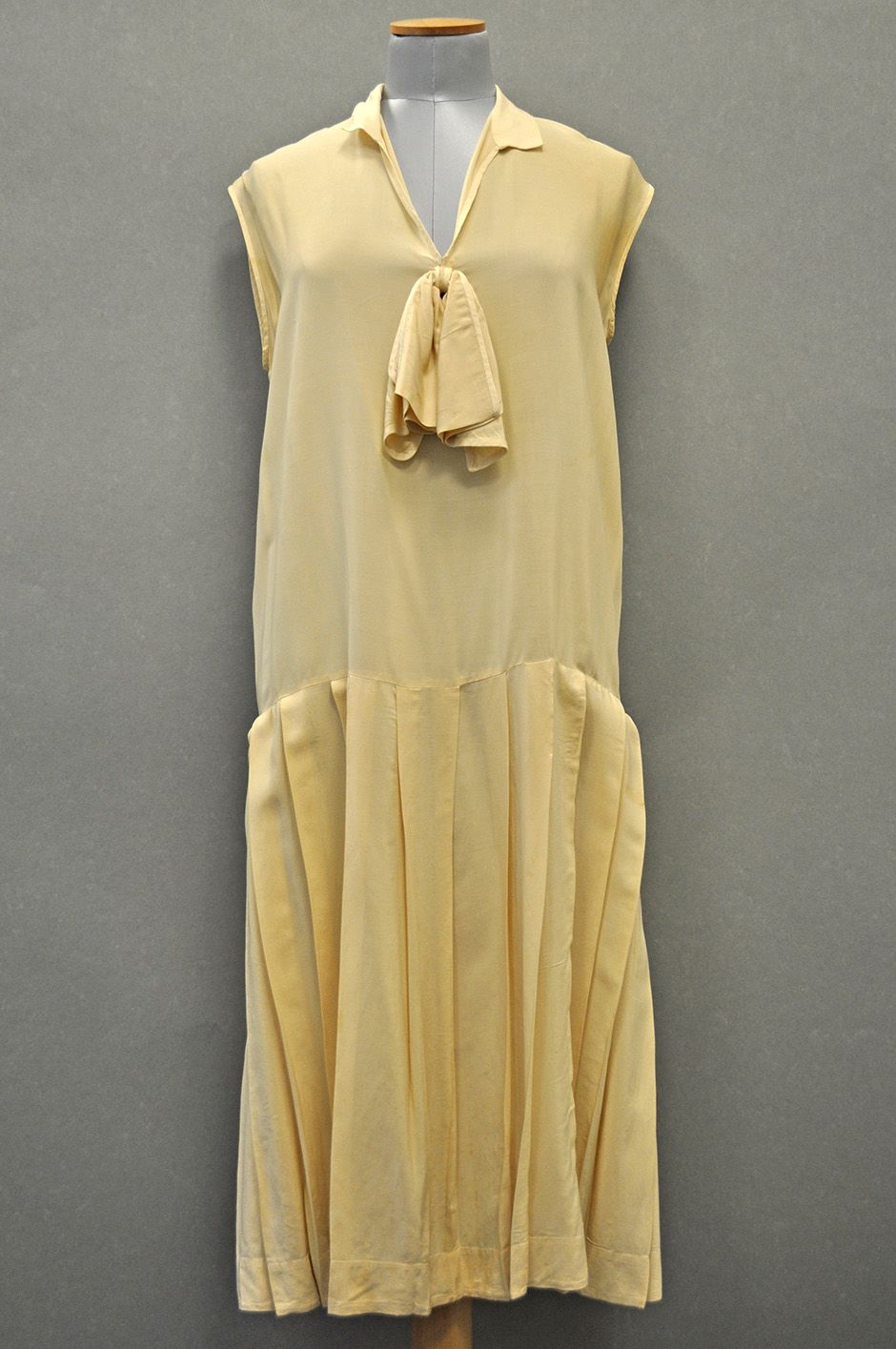
Silk tennis dress, about 1925
Silk tennis dress, about 1925
Race
The exhibition also shines a spotlight on attitudes to race in the 1924 Games. 1936 is well known for African-American athletes, such as Jesse Owens, undermining the Nazi’s myth of Aryan supremacy.
But 1924 was a significant moment for black identity and racial attitudes in its own right, with attention focused on two men: the Uruguay footballer José Leandro Andrade, and the American long-jumper William DeHart Hubbard.
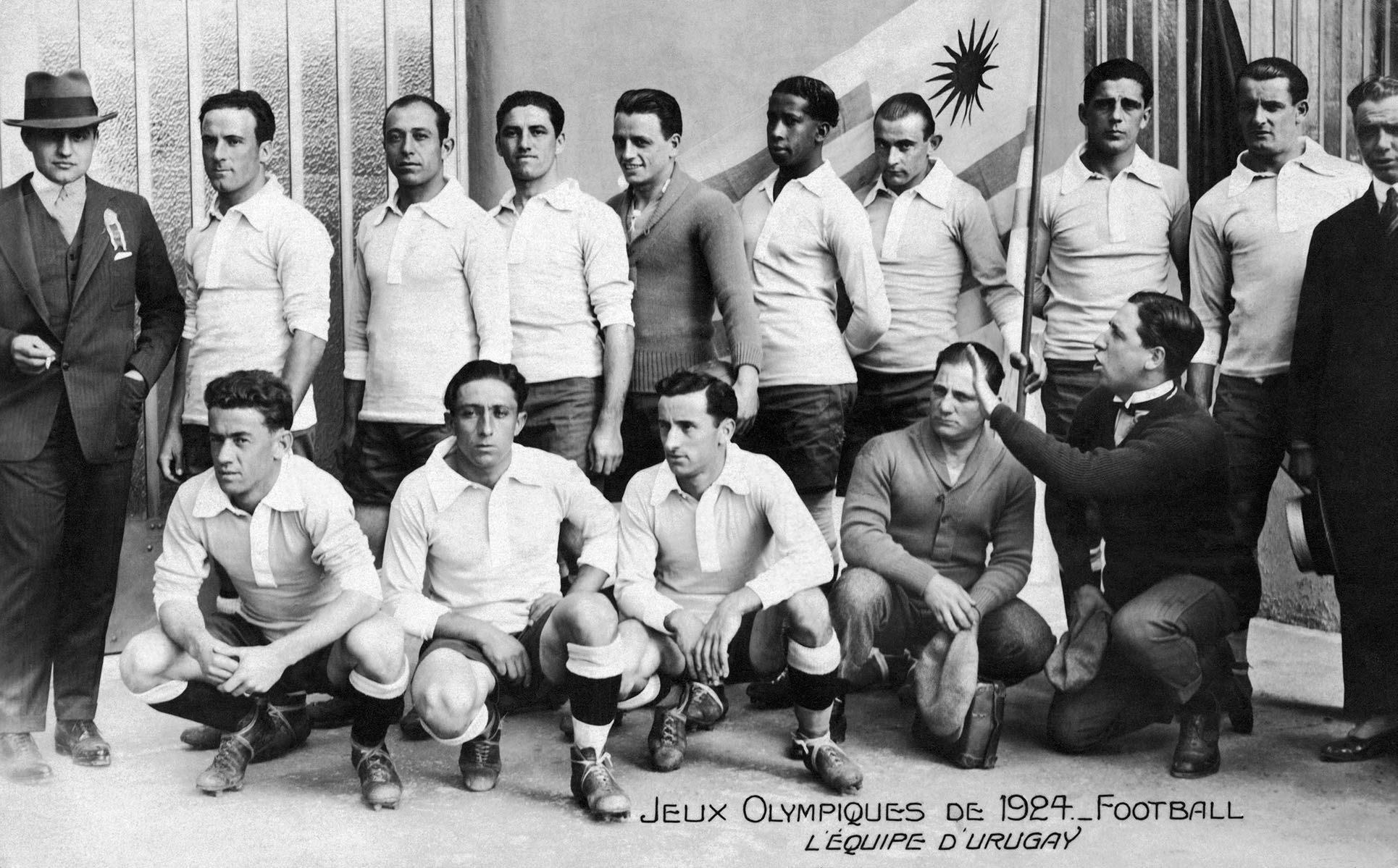
Uruguay’s 1924 Olympic football team
Uruguay’s 1924 Olympic football team
Uruguay won gold in their first Olympics in 1924, the first of three consecutive football world titles for the country, a feat never since repeated. In Paris, Andrade, the team’s best player, was called the ‘Black Marvel’. In both words and images, adoration and racist caricature swirled around him.
The Fitzwilliam will display the boots which he wore in the inaugural FIFA World Cup Final held in 1930. Young says: “They are like a holy relic to football fans and in their exhibition case they really become sculptural.”
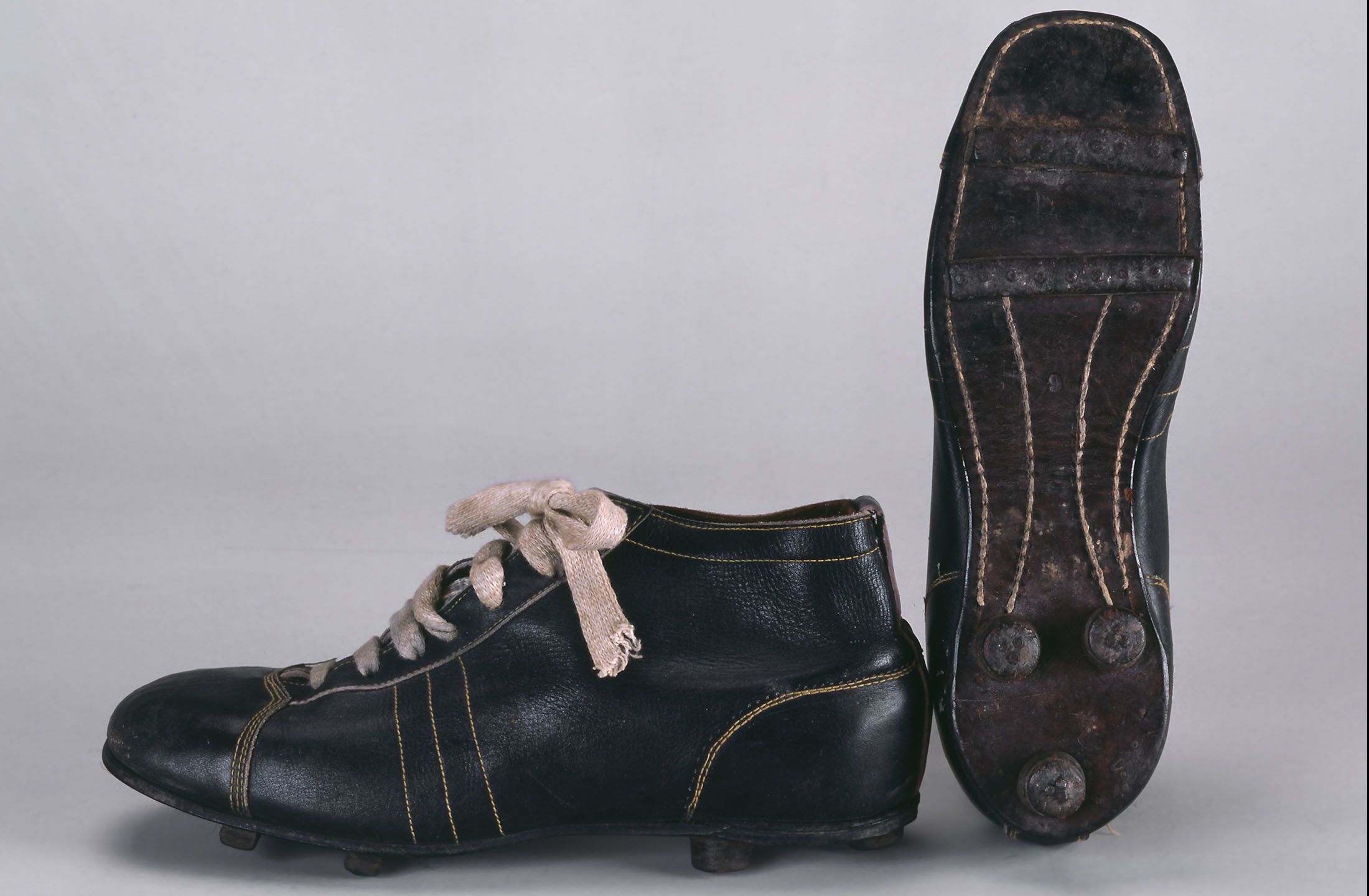
Andrade’s 1930 World Cup Final boots
Andrade’s 1930 World Cup Final boots
DeHart Hubbard became the first black athlete to ever win an individual gold medal in Paris, and arguably the most moving object in the exhibition is the letter which he wrote to his parents promising to do his best to become ‘the FIRST COLORED OLYMPIC CHAMPION’. DeHart Hubbard achieved this goal in the long jump before setting world records in this event and the 100-yard dash in 1925 and ’26.
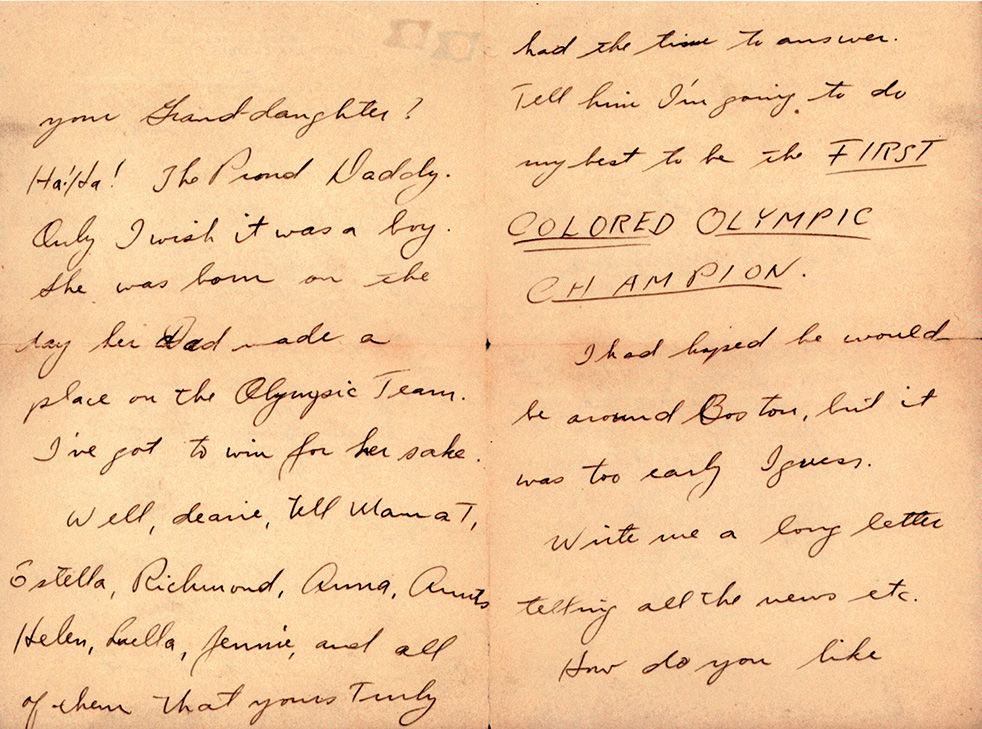
DeHart Hubbard letter to his mother, 16 June 1924
DeHart Hubbard letter to his mother, 16 June 1924
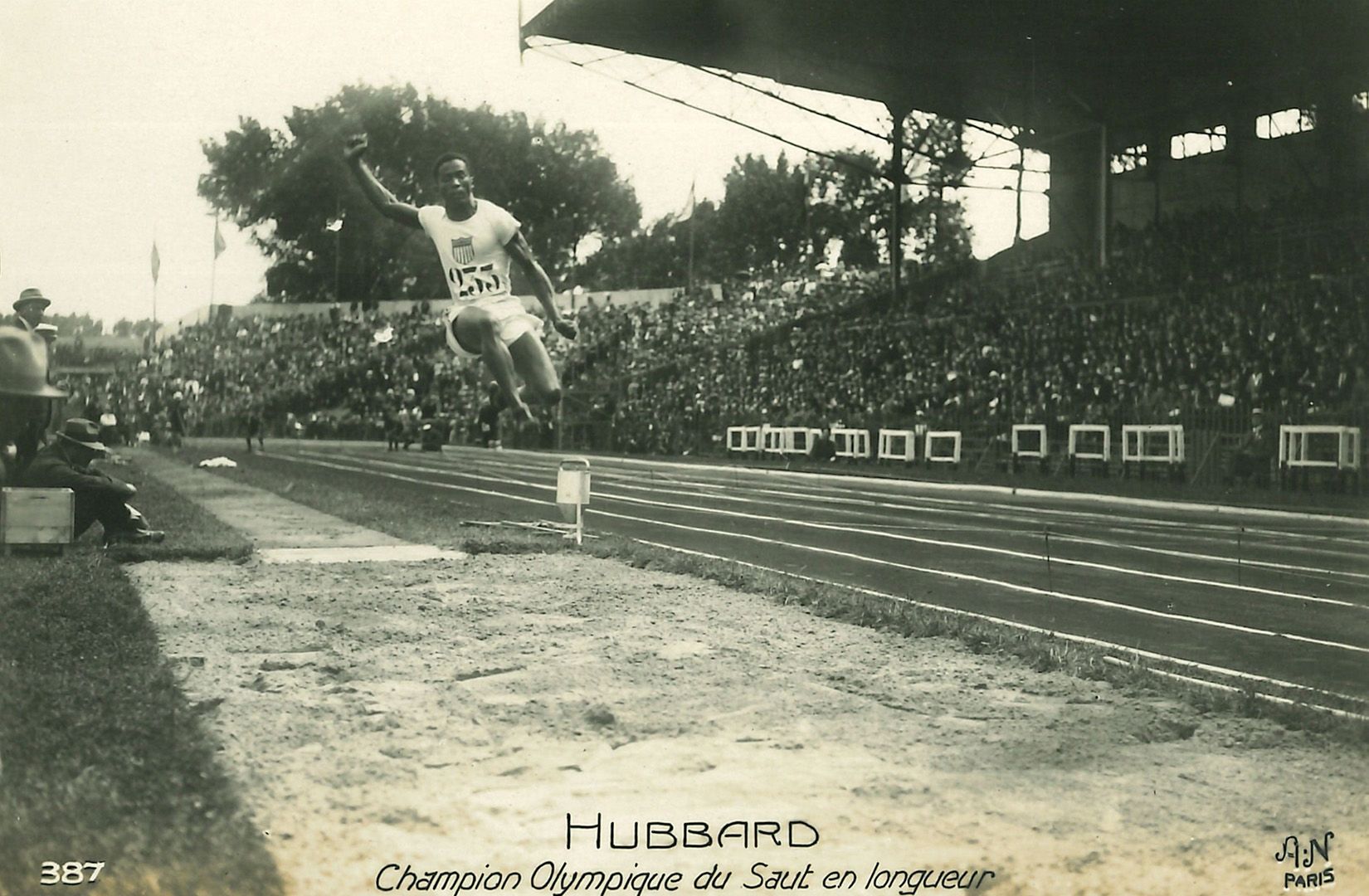
Postcard, Hubbard, Olympic Champion of the long jump (1924)
Postcard, Hubbard, Olympic Champion of the long jump (1924)
Legacy
The 1924 Games were far from perfect, its curators are keen to emphasise, and in many ways the event was a bigger success for individual athletes, sports, countries and other stakeholders than for de Coubertin or the Olympics itself.
“The function of the games still wasn’t clearly established,” says Young. “Competing elements were fighting for their place. Countries were interpreting things differently. But there was some falling into line with an official Olympic view. The event happened at a precarious time, but the signs of what the Games would ultimately become are there.”
Vout reflects on the fact that the Olympics continues to attract a fair amount of criticism. “This exhibition shows that the event wasn’t free from problems of race, gender and nationalism, but also that, on the whole, sport does a lot more good than harm.”
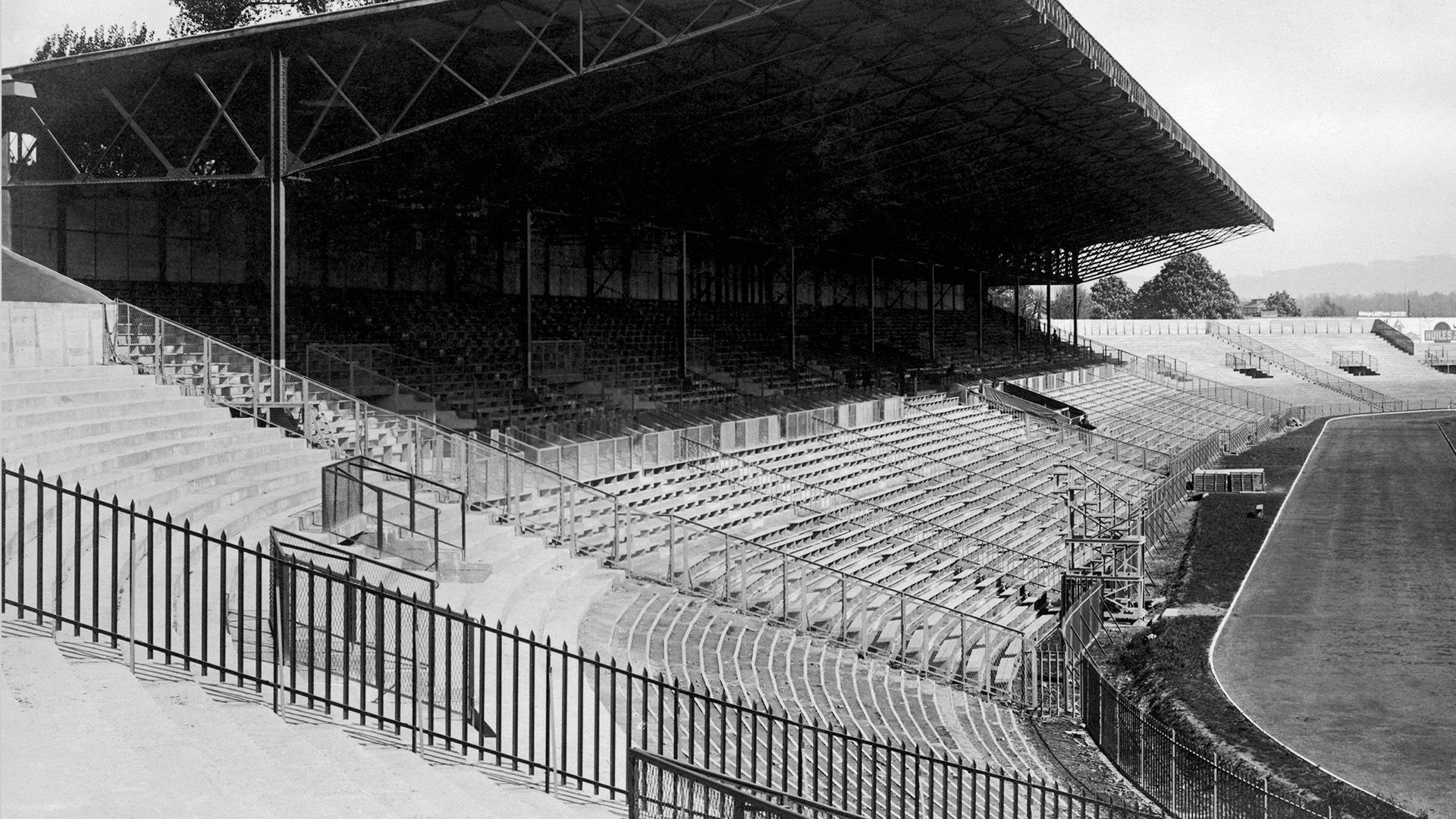
Published 10th July 2024
The text in this work is licensed under a Creative Commons Attribution-NonCommercial-ShareAlike 4.0 International License
Image credits
Title image: Robert Tait McKenzie, Plaster cast of Sprinter (1902)
© The Fitzwilliam Museum, Cambridge
Lucy Morton's 1924 gold medal
Showtown, Blackpool
Photograph of de Coubertin
United States Library of Congress
Douglas Lowe & Paul Martin
Comité International Olympique (CIO), PHO10004390
Entrance to the Olympic Village
Comité International Olympique (CIO), PHO11106719
Robert Delaunay, The Runners
The National Museum of Serbia
Image credits continued
H.L. Roowy, rugby postcard
Wimbledon Lawn Tennis Museum, WTM:2012/6.4
Plaster cast of The Wrestlers (about 1800)
Museum of Classical Archaeology, University of Cambridge. Photo by Michael Webb.
Programme for the Paris 1924 Olympic Games
© AELTC / Wimbledon Lawn Tennis Museum
Uruguay’s 1924 Olympic football team
© 1924 / Comité International Olympique (CIO) / United Archives
Andrade’s 1930 World Cup Final boots
Collections Musée national du Sport, France
DeHart Hubbard letter
DeHart Hubbard Collection, MSS 1067, Cincinnati Museum Center
Hubbard postcard
© Collections Musée National du Sport, France
Olympic Stadium of Colombes, 4 May 1924
© 1924 / Comité International Olympique (CIO)
